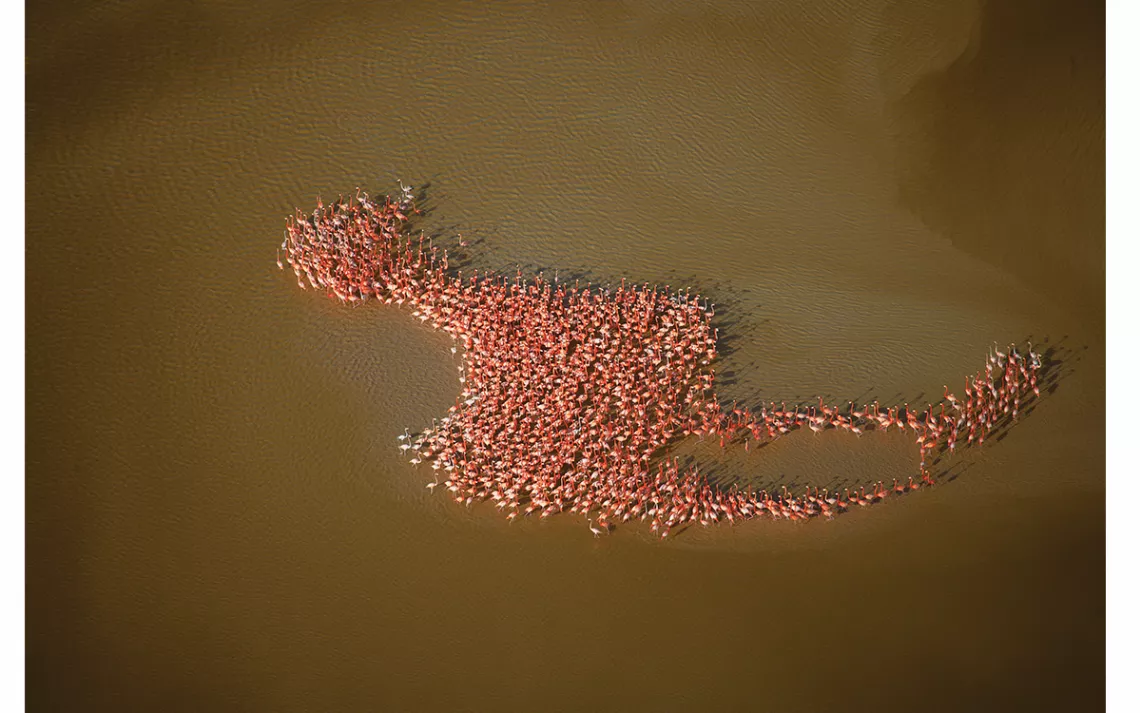100 Years of Birds
A new book from National Geographic curates the last century of avian photography
Photos courtesy of National Geographic
In a 1913 issue of National Geographic, ornithologist Frank M. Chapman lamented the stark divide between our civilized human world and most of the animal kingdom. Large mammals had been driven from our artificial landscapes. Smaller species, fish, and reptiles lived unobserved and unappreciated—out of sight and out of mind.
But birds, he wrote, are everywhere. “In field and wood and sky, in our orchards and gardens—and some of them are with us at all seasons.” Why, he asks, leave knowledge of these ubiquitous winged and feathered vertebrates to the poets and naturalists?
Chapman’s words came at a turning point for a growing movement to turn an admiration for birds into their protection. Five years later, Congress passed the Migratory Bird Treaty Act of 1918, one of the first environmental protection laws in the country. A century later, the National Geographic Society published The Splendor of Birds as part of a year-long celebration of 100 years of federal protections for nearly 1,000 species of migratory birds.
The Splendor of Birds is a hardbound collection of over 500 images showcasing the last century of photographing birds. For birders, the book is a testament to the diversity in habitats, habits, colors, and textures of the avian world. For photographers, it’s a timeline of technique, showing the evolution of bird photography from the scuffed and thumb-printed negatives of early-century expeditions to high-megapixel, awe-inspiring moments from Paul Nicklen or electronically blended “day-to-night” frames from Stephen Wilkes. The images reveal a changing relationship we have with birds. Photographers like Frans Lanting, Joel Sartore, Tim Laman, Anand Varma, and others show how our documentation of our winged neighbors has grown in tandem with our ornithological understanding of them.
This re-release of many popular bird images from the magazine’s historical archives comes at a time when the laws that protect these birds have been under political scrutiny. Just last April, the Interior Department released a new legal interpretation of the enforcement of the Migratory Bird Treaty Act, which could lead to the unchecked death of millions of birds each year.
As Jonathan Baillie, chief scientist of the National Geographic Society, notes in the foreword of The Splendor of Birds, hundreds of bird species face imminent risk of extinction, while many more face unprecedented challenges to their populations.
“The future of birds . . . is no longer something we take for granted,” he writes. “It’s something we know we must all work to ensure.”
The Splendor of Birds, then, is both a retrospection and a look ahead—at what scientists, photographers, and conservationists have and will continue to protect. “The places and people that make our world are [ever] changing,” wrote Chapman a century ago. “The present slips from us with growing rapidity, but the birds are ever with us.”
 The Magazine of The Sierra Club
The Magazine of The Sierra Club
















